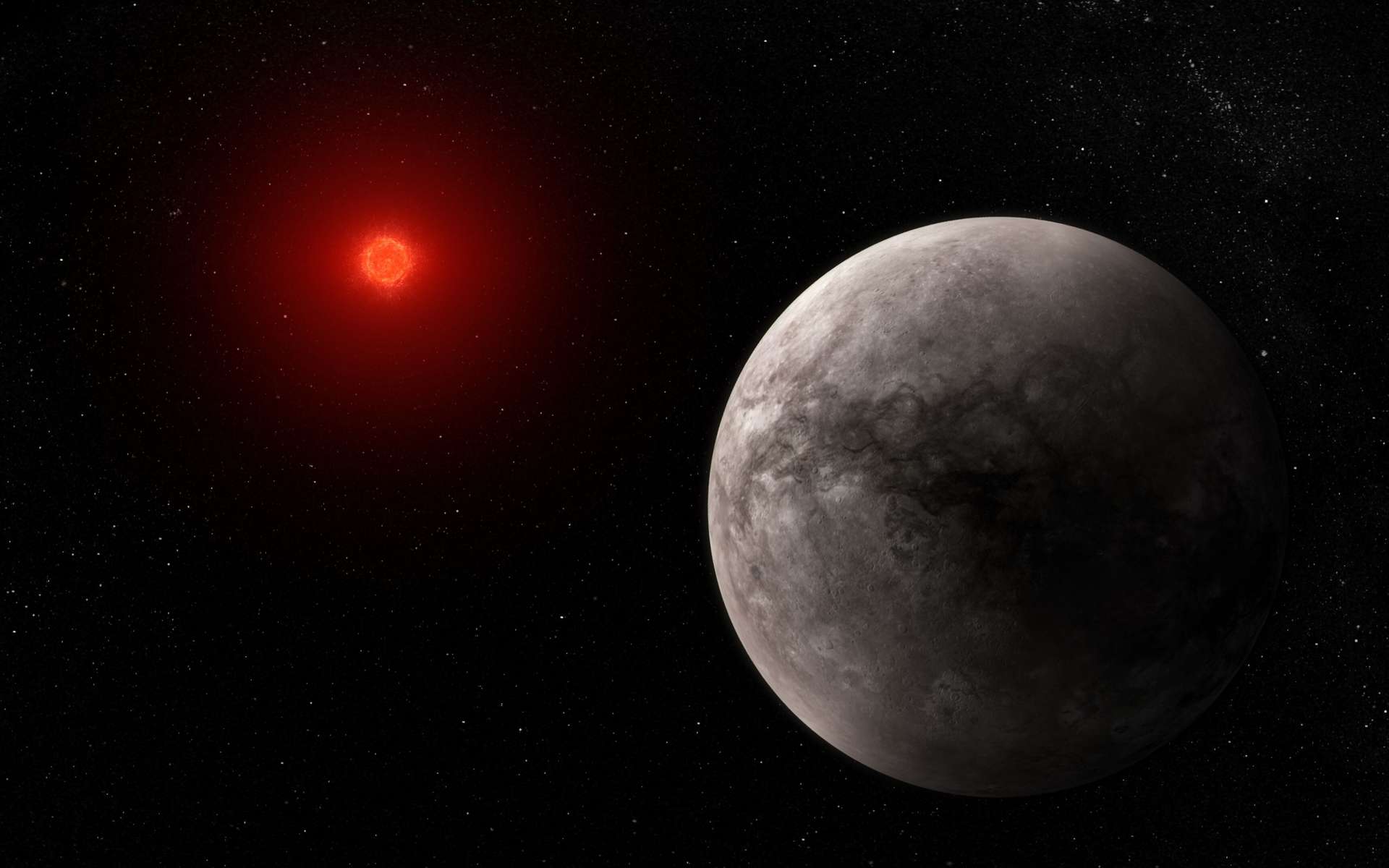
It belongs to one of the most promising stellar systems for the search for extraterrestrial life: the exoplanet Trappist-1b has been probed by the Miri instrument of the James-Webb telescope, in search of an atmosphere. What does the collected data tell us?
Located at 40.5 light yearslight years from Earth, the star Trappist-1 intrigues astronomersastronomers since its discovery in 1999. Indeed, this dwarf stardwarf star red is home to at least seven exoplanets, all with characteristics close to the rocky planetsrocky planets of our Solar systemSolar system : size, mass, or even density! Among them, three are in the habitable zone, the one that would allow the presence of water in the state liquidliquid.
This is why one of the first missions of the telescopetelescope James-Webb was to concentrate on it, and point his instrument MiriMiri towards this intriguing planetary system. He pointed his sights at Trappist-1b, theexoplanetexoplanet closest to the star. The results have just been published in Nature. “These observations really take advantage of the ability infraredinfrared Webb’s way”explains Thomas Greene in an ESA press release, astrophysicistastrophysicist at the Ames research center of the NasaNasa and lead author of the study. “No previous telescope had the sensitivity to measure such weak mid-infrared light.”
Trappist-1b has no significant atmosphere
With a diameter similar to that of the Earth, Trappist-1b is however much closer to its star, with a distance to its star 10 times less than that of between MercuryMercury and the SunSun. But, because of its star, a red dwarf whose radiation is much lower than that of the Sun, a yellow dwarfyellow dwarf, the light it receives is substantially similar, equivalent to 4 times that of the Earth. Above all, “This planet is locked down by the tidestideswith one side facing the star at all times and the other in permanent darknessexplains Pierre-Olivier Lagage of the CEA, co-author of the article. If there is one atmosphereatmosphere to circulate and redistribute the heat, the day side will be cooler than if there is no atmosphere”.
This is exactly what scientists have been looking for: using a technique called spectroscopyeclipseeclipse secondary school, they managed to measure the change in brightnessbrightness of the system when the planet passes behind the star. Then, it is possible to return to the luminosity of the planet by subtracting the measurement during the eclipse from that without eclipse. All in the infrared thanks to the James-Webb Miri instrument, which corresponds to thermal radiation. This luminosity can then be linked to the temperature of the star, therefore to the presence – or not – of atmosphere!
The results are rather disappointing: there are none! “We compared the results to computer models showing what the temperature should be like in different scenarios.explains Elsa Ducrot, scientist at the CEA and co-author of the study. The results are almost perfectly consistent with a black bodyblack body consisting of bare rock with no atmosphere to circulate heat. Nor have we seen any signs ofabsorptionabsorption light by the carbon dioxidecarbon dioxidewhich would be apparent in these measurements”.
“A really important step in the history of the discovery of exoplanets”
If this result is not positive, it allows on the other hand to confirm the capacities of James-Webb, and remains very encouraging for the continuation. Because, for the very first time, a temperate exoplanet has been characterized. “There was a target that I dreamed of havingadds P. Lagage. And it was this one. This is the first time that we can detect theissueissue of a rocky and temperate planet. This is a really important step in the history of the discovery of exoplanets”.
Subsequently, other planets of the Trappist-1 system, or even other planetary systems will be probed in the same way. Particularly around red dwarfs, the most likely stars for the detection of extraterrestrial life. “There are ten times as many of these stars in the Milky WayMilky Way that there are stars like the Sun, and they are twice as likely to have rocky planets as stars like the Sunconcludes TP Greene. But they’re also very active — they’re very bright when they’re young and they emit rocketsrockets enlightening and X-raysX-rays which can annihilate an atmosphere”.




GIPHY App Key not set. Please check settings